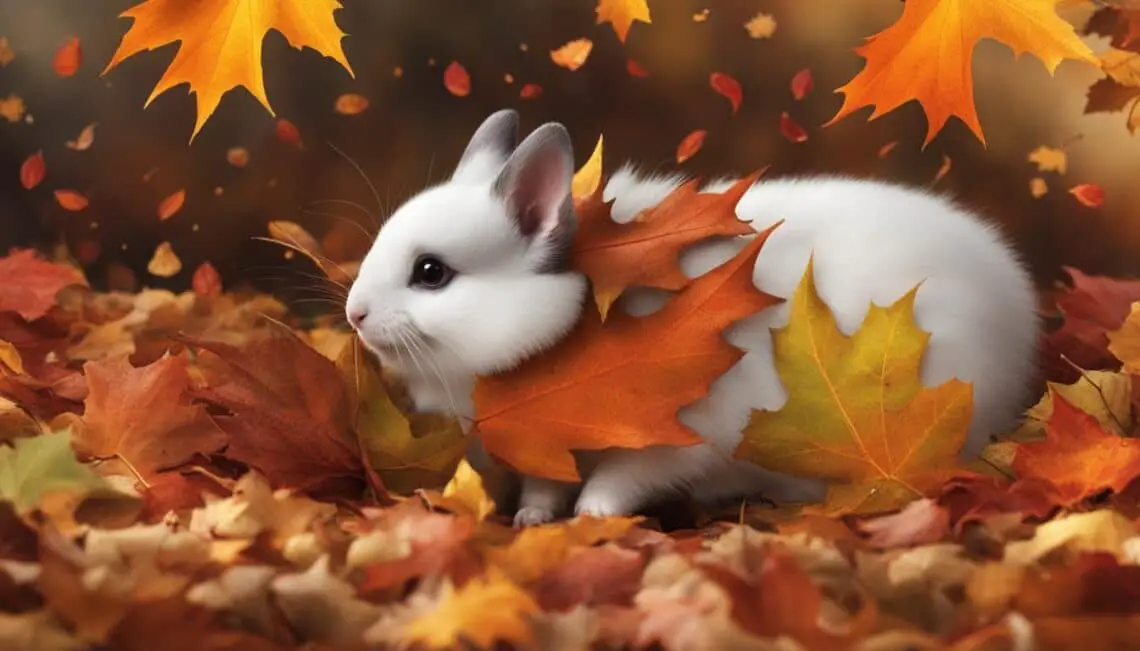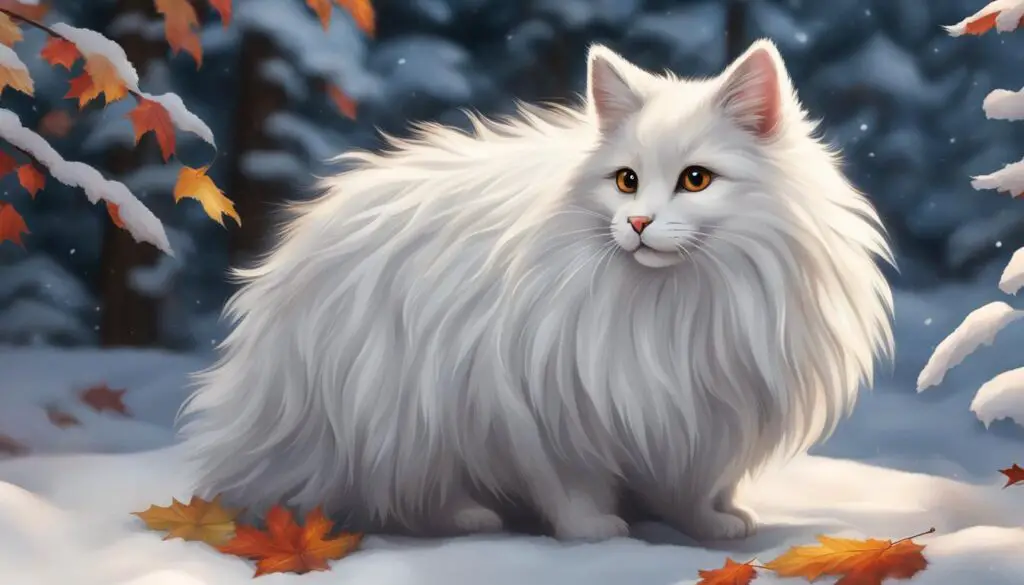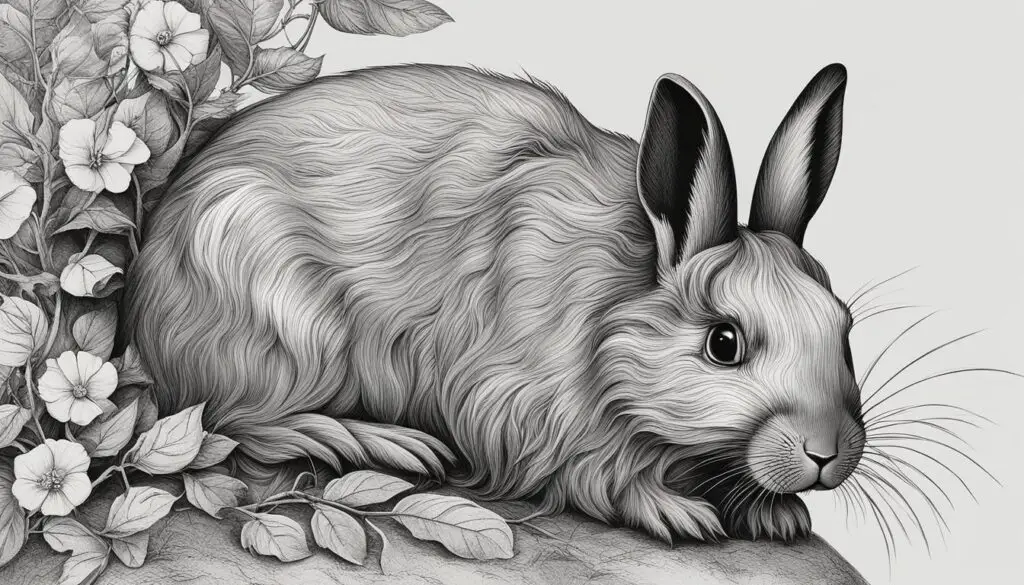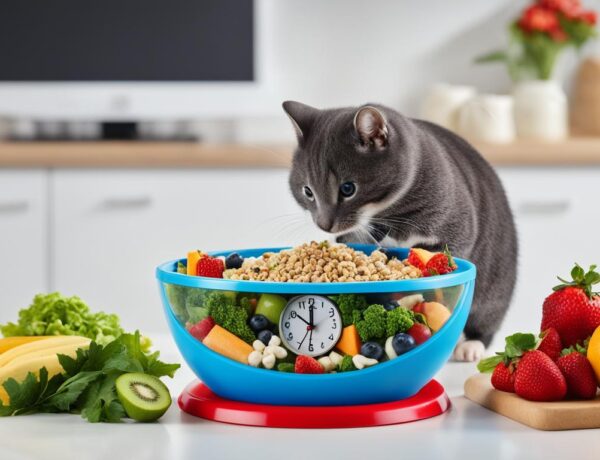As a pet owner, I have always been fascinated by the way small animals, like hamsters, rabbits, and guinea pigs, adapt to the different seasons. These adorable creatures, just like their wild counterparts, exhibit fascinating behavioral adaptations in response to changes in the weather and daylight. Understanding these adaptations can help us provide the best care for our small pets throughout the year.
During different seasons, small pets display various behavioral changes that allow them to thrive in their environments. These adaptations involve their appetite, psychology, fur coat, joint health, paw health, and overall behavior. By recognizing and addressing these changes, we can ensure our beloved small pets remain happy and healthy all year round.
Key Takeaways:
- Small pets, like hamsters and guinea pigs, exhibit behavioral adaptations in response to seasonal changes in the environment.
- Changes in appetite, psychology, fur coat, joint health, and paw health are common among small pets in different seasons.
- Understanding these behavioral adaptations can help pet owners better care for their small pets throughout the year.
- Consulting with a veterinarian for specific recommendations is essential to ensure the well-being of small pets.
- By adapting to these seasonal changes, pet owners can provide a supportive and nurturing environment for their small pets.
Seasonal Changes in Appetite
Seasonal shifts in temperature and daylight can have a significant impact on the appetite of small pets. Just like humans, these changes can be attributed to metabolic and hormonal alterations in their bodies. Understanding how these changes affect their appetite can help pet owners provide the necessary care and support for their furry friends throughout the year.
In summer and spring, when days are longer and temperatures rise, small pets tend to have a smaller appetite and a lower metabolism rate. This is believed to be a result of the body’s natural response to the increased energy from sunlight and higher temperatures. As a result, small pets may eat less during these seasons.
On the other hand, as fall and winter approach, the decrease in daylight and temperatures triggers metabolic and hormonal changes in small pets. Their bodies need more energy to maintain body temperature, leading to an increased appetite. This change in appetite allows small pets to prepare their bodies for the different food availability that comes with the colder seasons.
It is important for pet owners to be aware of these seasonal changes in appetite and adjust their pets’ diet accordingly. Providing the right amount of food and ensuring it meets their nutritional needs can help them stay healthy and maintain a proper weight throughout the year.
| Season | Appetite | Metabolism |
|---|---|---|
| Summer and Spring | Smaller appetite | Lower metabolism rate |
| Fall and Winter | Increased appetite | Higher metabolism rate |
By understanding and accommodating these appetite changes, pet owners can ensure their small pets are well-nourished and comfortable throughout all seasons.
Psychological Changes in Small Pets
Just like humans, small pets can experience seasonal affective disorder (SAD). The cold, dark winter nights can lead to behavioral changes in pets, including increased neediness, aggression, and inappropriate potty behavior. Some extreme cases of SAD in pets may even lead to hair loss. Understanding these psychological changes can help pet owners provide the necessary support and care for their small pets during the winter months.
Effect of Seasonal Affective Disorder
Seasonal affective disorder (SAD) is a condition that affects both humans and animals during the winter months when there is less natural light and colder temperatures. Pet owners may notice behavioral changes in their small pets, such as increased clinginess, seeking more attention, and displays of aggression.
Neediness is a common symptom of SAD in small pets. They may constantly seek reassurance and physical contact from their owners. This behavior is a result of feeling anxious and insecure due to the lack of natural light and the changes in their environment.
Aggression is another behavioral change that can be observed in small pets experiencing SAD. These pets may become irritable, easily agitated, and more prone to displaying aggressive behaviors towards other animals or even their human companions.
Dealing with Behavioral Changes
Addressing and managing the psychological changes in small pets during the winter months is crucial for their well-being. Here are some tips to help pet owners navigate the behavioral changes associated with SAD:
- Provide a comforting environment: Create a warm and cozy living space for your pet, with plenty of soft bedding, toys, and activities to keep them engaged.
- Increase mental stimulation: Engage your small pet in interactive play sessions to keep their mind stimulated and alleviate boredom.
- Establish a routine: Stick to a consistent daily routine to provide structure and stability for your pet.
- Ensure proper nutrition: Feed your pet a balanced diet and consult with a veterinarian for any necessary dietary adjustments to support their overall health and well-being.
- Consult a veterinarian: If your small pet’s behavioral changes are severe or persist for an extended period, seek professional advice from a veterinarian who can provide further guidance and solutions.
“During the winter months, it’s important for pet owners to be attuned to their small pets’ psychological well-being. Understanding the effects of seasonal affective disorder and implementing appropriate strategies can help alleviate their discomfort and ensure their happiness and health.”
In summary, the cold and dark winter months can have a profound impact on the psychological well-being of small pets. Seasonal affective disorder can manifest as increased neediness, aggression, and other behavioral changes. By providing a comforting environment, engaging in interactive play, maintaining a routine, ensuring proper nutrition, and seeking veterinary advice when necessary, pet owners can help their small pets navigate the challenges of SAD and ensure their overall well-being during the winter season.
Fur Coat Changes in Small Pets
Small pets, such as rabbits, guinea pigs, and hamsters, undergo seasonal changes in their fur coat to adapt to different weather conditions. These adaptations play a crucial role in helping them stay warm, comfortable, and protected throughout the year.
As the colder months approach, small pets develop a thicker coat to provide insulation against the dropping temperatures. This thicker coat helps them retain body heat and stay comfortable during winter. It acts as a natural barrier, shielding them from the chilly winds and low temperatures.
On the other hand, during spring and summer, small pets shed their fur to prepare for the warmer weather. This shedding process helps them regulate their body temperature, preventing overheating. It also allows for the growth of a lighter coat that is better suited for the higher temperatures.
However, the cold and dry weather in autumn and winter can lead to certain skin issues in small pets. Dry skin and dandruff are common problems during this time, as the lack of humidity depletes the skin’s natural moisture. Pet owners should keep an eye out for signs of dry skin, such as flakiness or excessive itching, and take appropriate measures to address the issue.
Additionally, warmer months can bring about an increase in parasites such as fleas and ticks. These parasites thrive in humid conditions and pose health risks to small pets. Regular grooming and flea/tick control measures are essential to prevent infestations and alleviate the discomfort caused by these parasites.
| Fur Coat Changes in Small Pets | Adaptation |
|---|---|
| Winter Months | Thicker coat for insulation against cold weather |
| Spring and Summer | Shedding for temperature regulation and growth of a lighter coat |
| Autumn and Winter | Potential dry skin and dandruff due to cold and dry weather |
| All Seasons | Possible increase in parasite problems |
Overall, understanding the fur coat changes in small pets and taking appropriate actions can help ensure their comfort and well-being. Regular grooming, moisturizing products, and parasite control measures are essential to address any issues and maintain a healthy coat throughout the year.
Seasonal Aggravation of Joint Symptoms
Cold weather can have a significant impact on the joint health of small pets, particularly those with arthritis. The combination of low temperatures and decreased activity during the winter months can worsen symptoms, leading to joint inflammation and stiffness.
Arthritis is a common condition in small pets that causes chronic inflammation and pain in the joints. As the weather gets colder, the blood vessels in the joints constrict, reducing blood flow and limiting the delivery of essential nutrients and oxygen to the affected areas. This restricted blood flow can exacerbate joint inflammation, making it more difficult for small pets to move and resulting in heightened discomfort.
Furthermore, decreased activity during the winter months contributes to the progression of arthritis in small pets. When animals are less active, their joints are not as regularly lubricated and the surrounding muscles can become weaker. This lack of movement and muscle support further worsen joint inflammation and stiffness, making it even more challenging for pets to maintain their mobility.
Small pets with arthritis may manifest symptoms such as lameness, stiff joints, irritability, depression, and reluctance to jump or engage in physical activities. These signs can significantly impact their overall quality of life and well-being.
To alleviate the seasonal aggravation of joint symptoms in small pets, it is crucial for pet owners to provide appropriate exercise and joint support during the colder months. Regular, gentle exercise helps maintain joint mobility and muscle strength, reducing inflammation and promoting overall joint health.
In addition to exercise, pet owners can explore joint support supplements recommended by their veterinarians. These supplements often contain ingredients like glucosamine and chondroitin, which help reduce joint inflammation and support cartilage health. Consultation with a veterinarian is essential to determine the appropriate dosage and formulation for each individual small pet.
By addressing the seasonal aggravation of joint symptoms in small pets, pet owners can help alleviate discomfort, improve mobility, and enhance the overall quality of life for their furry companions.
Paw Health in Small Pets
During the winter months, small pets are susceptible to paw pad trauma, frostbite, dryness, and cracking. The cold temperatures and harsh weather conditions can take a toll on their delicate paws. Additionally, the salt and chemicals used to melt snow and ice can further irritate and harm their paw pads. As a responsible pet owner, it is essential to take protective measures to ensure the well-being of your furry friend.
One way to protect your pet’s paws is by applying a thin layer of cooking oil or a protective balm before going for a walk. This creates a barrier between their paws and the cold ground, reducing the risk of paw pad trauma and frostbite. It also helps to moisturize the pads, preventing dryness and cracking.
After each walk, make it a habit to wipe your pet’s paws thoroughly with a clean towel. This removes any salt, chemicals, or other irritants that may have accumulated on their paws. Pay close attention to the spaces between their toes and ensure that they are completely dry. Keeping their paws clean and dry reduces the chances of skin irritation and infection.
If your pet’s paws are particularly sensitive or if you live in an area with extreme winter conditions, you may want to consider using dog boots. These boots provide an additional layer of protection against the cold and chemicals, keeping your pet’s paws safe and comfortable.
Protecting your pet’s paws during the winter is crucial to their overall health and well-being. By taking the necessary precautions and implementing these protective measures, you can ensure that your small pet’s paws stay healthy and free from any winter-related injuries or discomfort.
Conclusion
Understanding and adapting to the seasonal behaviors of small pets is crucial for their overall health and well-being. By recognizing the changes that occur in different seasons, pet owners can provide the best care for their furry friends.
From managing appetite and addressing psychological needs to maintaining a healthy fur coat and ensuring joint and paw health, being aware of these adaptations can help small pets thrive all year round.
Consulting with veterinarians is highly recommended to obtain specific recommendations and guidance tailored to the individual needs of small pets. Veterinarians can provide valuable insights on seasonal behaviors and weather adaptations that will ensure the best possible care for small pets’ health.
FAQ
Do small pets exhibit behavioral adaptations in response to seasonal changes?
Yes, small pets, like their wild counterparts, exhibit behavioral adaptations in response to seasonal changes. These adaptations include changes in appetite, psychological behavior, fur coat, joint health, paw health, and overall behavior.
How do seasonal shifts in temperature and daylight affect small pets’ appetite?
Seasonal shifts in temperature and daylight can lead to metabolic and hormonal changes in small pets, affecting their appetite. During summer and spring, longer days signal a smaller appetite and lower metabolism rate. However, as temperatures drop in fall and winter, small pets’ bodies require more energy to maintain body temperature, resulting in an increased appetite.
Can small pets experience seasonal affective disorder (SAD)?
Yes, just like humans, small pets can experience seasonal affective disorder (SAD). The cold, dark winter nights can lead to behavioral changes in pets, including increased neediness, aggression, and inappropriate potty behavior. Some extreme cases of SAD in pets may even lead to hair loss.
How do small pets’ fur coats change according to the seasons?
Small pets develop changes in their fur coat according to the seasons. As the cold months approach, their coat becomes thicker to provide insulation. During spring and summer, small pets shed their fur to prepare for the warmer weather. However, cold and dry weather in autumn and winter can cause dry skin and dandruff in small pets. Additionally, warm months can lead to increased parasite problems.
Does cold weather worsen symptoms of arthritis in small pets?
Yes, cold weather can worsen symptoms of arthritis in small pets, leading to joint inflammation and stiffness. The decreased activity during winter months contributes to the progression of arthritis. Pet owners should provide appropriate exercise and joint support for their small pets during the colder months.
How can winter weather affect small pets’ paw health?
Winter weather can be harsh on small pets’ paw pads, leading to trauma, frostbite, dryness, and cracking. The salt and chemicals used to melt snow can also harm the paws. Pet owners should take precautions, such as applying cooking oil or protective balm to the paws before walks, wiping the paws after walks, and considering the use of dog boots to protect the paws from winter elements.
Why is it important to understand seasonal behavioral changes in small pets?
Seasonal behavioral changes in small pets are an important aspect of their overall health and well-being. Understanding and adapting to these changes can help pet owners provide the best care for their small pets in different seasons. From managing appetite and psychological needs to maintaining a healthy fur coat and addressing joint and paw health, being aware of these adaptations can ensure that small pets thrive throughout the year. Pet owners should consult with their veterinarians for specific recommendations and guidance based on their small pets’ individual needs.







No Comments